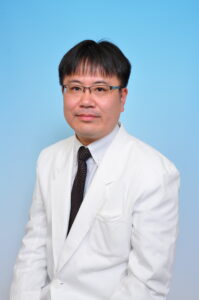The Shizuoka Cancer Center, Japan has been delivering SBRT using Synchrony on the Radixact® Treatment Delivery System since 2021.
Join Hideyuki Harada, M.D., Ph.D., and Tetsuya Tomida, MSc., who will share their initial experience utilizing Synchrony technology.
The presentation will include:
– The commissioning process. What the Shizuoka Cancer Center has learned from patient QA and additional validation.
– CT simulation for Synchrony (Introduction of the Shizuoka Cancer Center method).
– Importance of Synchrony simulation
– Introduction of SBRT using Synchrony (Lung tumor: Lung with respiratory, Adrenal tumor: Fiducial respiratory)
– Introduction of cases in which Synchrony was judged to be unsuitable during the simulation and treatment period.
This webinar will provide practical and technical information for SBRT treatment delivery using Synchrony on the Radixact Treatment Delivery System.

Hideyuki Harada, M.D., Ph.D., Chief, Division of Radiation Therapy, Shizuoka Cancer Center, Japan
Dr. Harada is the Chief, Radiation Oncologist, Division of Radiation Therapy, Shizuoka Cancer Center, Shizuoka, Japan, and he has held this position since 2015. Dr. Harada received his M.D., in 1999 and was awarded a Ph.D. in 2010, receiving both awards from Hamamatsu University School of Medicine. He is a board-certified member of the Japanese Board of Radiology – Therapeutic Radiology, the Japanese Board of Radiation Oncology, and the Japanese Board of Cancer Therapy. He is a member of the Japan Radiological Society, Japanese Society for Therapeutic Radiology and Oncology, Japan Society of Clinical Oncology, Japan Lung Cancer Society and International Member, American Society for Therapeutic Radiology and Oncology. His fields of expertise are in high-precision radiation therapy, lung cancer, sarcoma, and brain tumors.

Tetsuya Tomida, MSc., Radiologic Technologist, Medical Physicist, Quality Control Specialist, Division of Radiation Therapy, Shizuoka Cancer Center, Japan
Tetsuya Tomida is a Medical Physicist at Shizuoka Cancer Center, Japan since 2003. He graduated from Ibaraki Prefectural University of Health Sciences, Graduate School of Health Sciences, Master of Sciences in Radiological Sciences in 2003. His current areas of research are Flattening Filter Free Beam, respiratory migration velocity of tumors using 4DCT and setup errors. He has experience in proton therapy. He started up a CT co-located linac and studied the effect of setup errors on dose distribution. He has also carried out research on automatic exposure control of diagnostic CT, and research on ultra-early phase in contrast-enhanced MRI of the breast.

Moderated by: Hiroshi Onishi, M.D., Professor, and Chairman, Department of Radiology, Vice-director of School Medicine, University of Yamanashi, Yamanashi, Japan
Prof. Hiroshi Onishi, is Professor and Chairman, Department of Radiology, University of Yamanashi, and Vice-director of School Medicine at the University of Yamanashi.
Prof. Hiroshi Onishi is a board member of JASTRO and is a chairman of the Health Insurance Committee. He is a specialist in SBRT, particularly for lung cancer. He first showed the minimum required dose of SBRT for stage I non-small cell lung cancer (NSCLC), and his papers have been referred to in the NCCN guideline for NSCLC.

